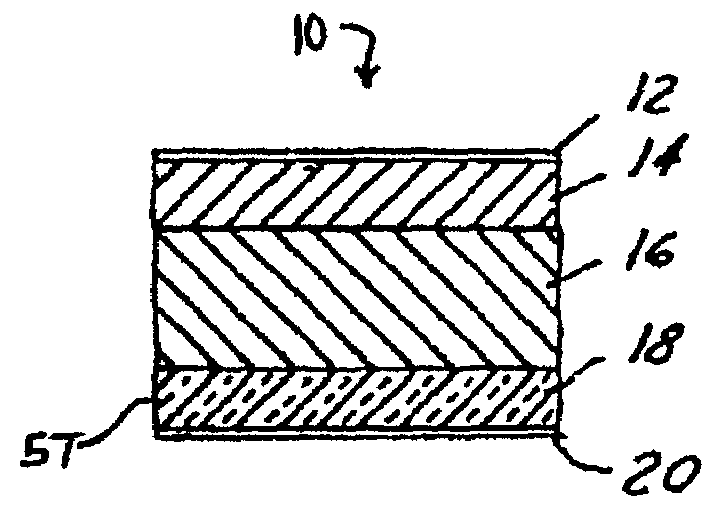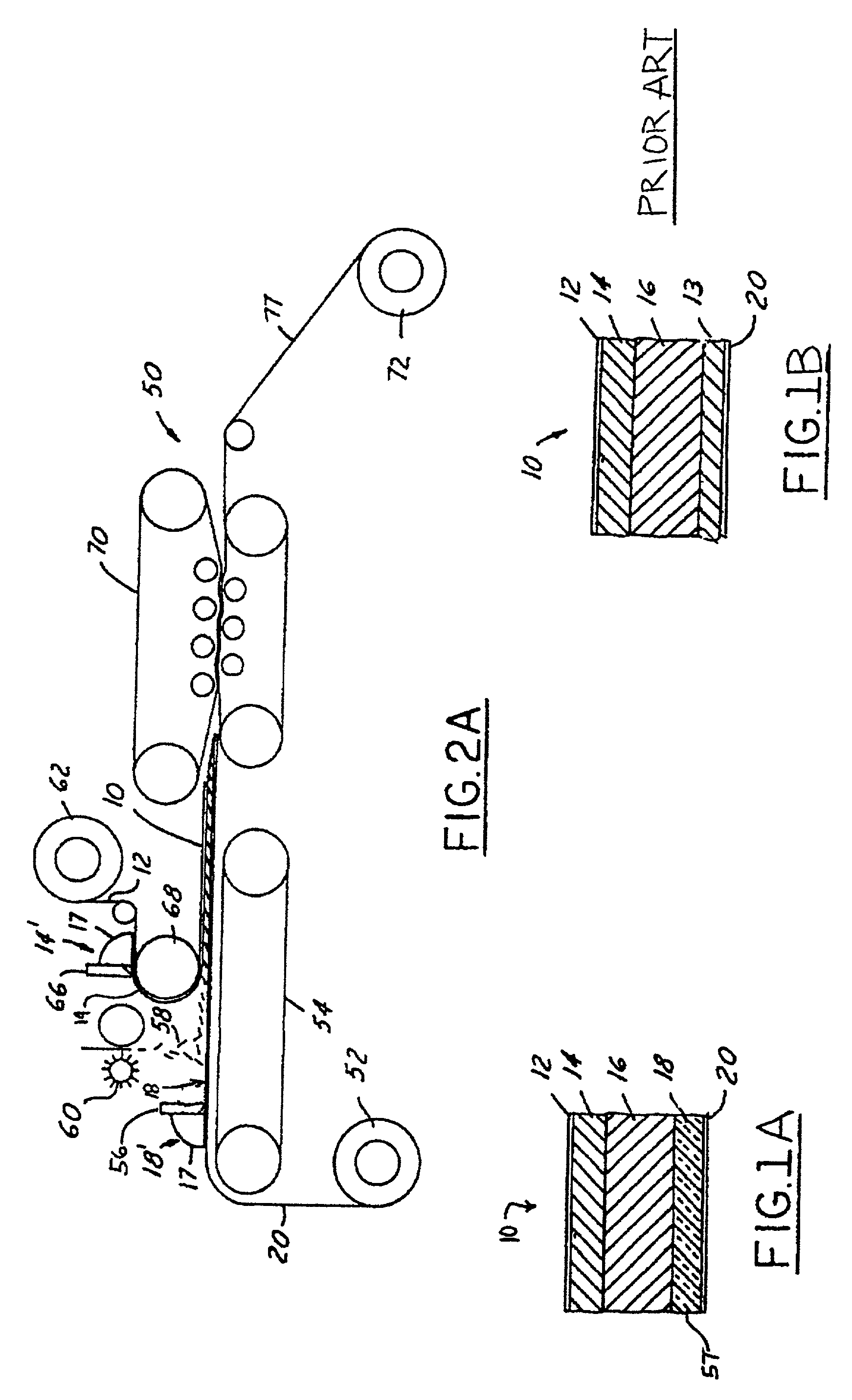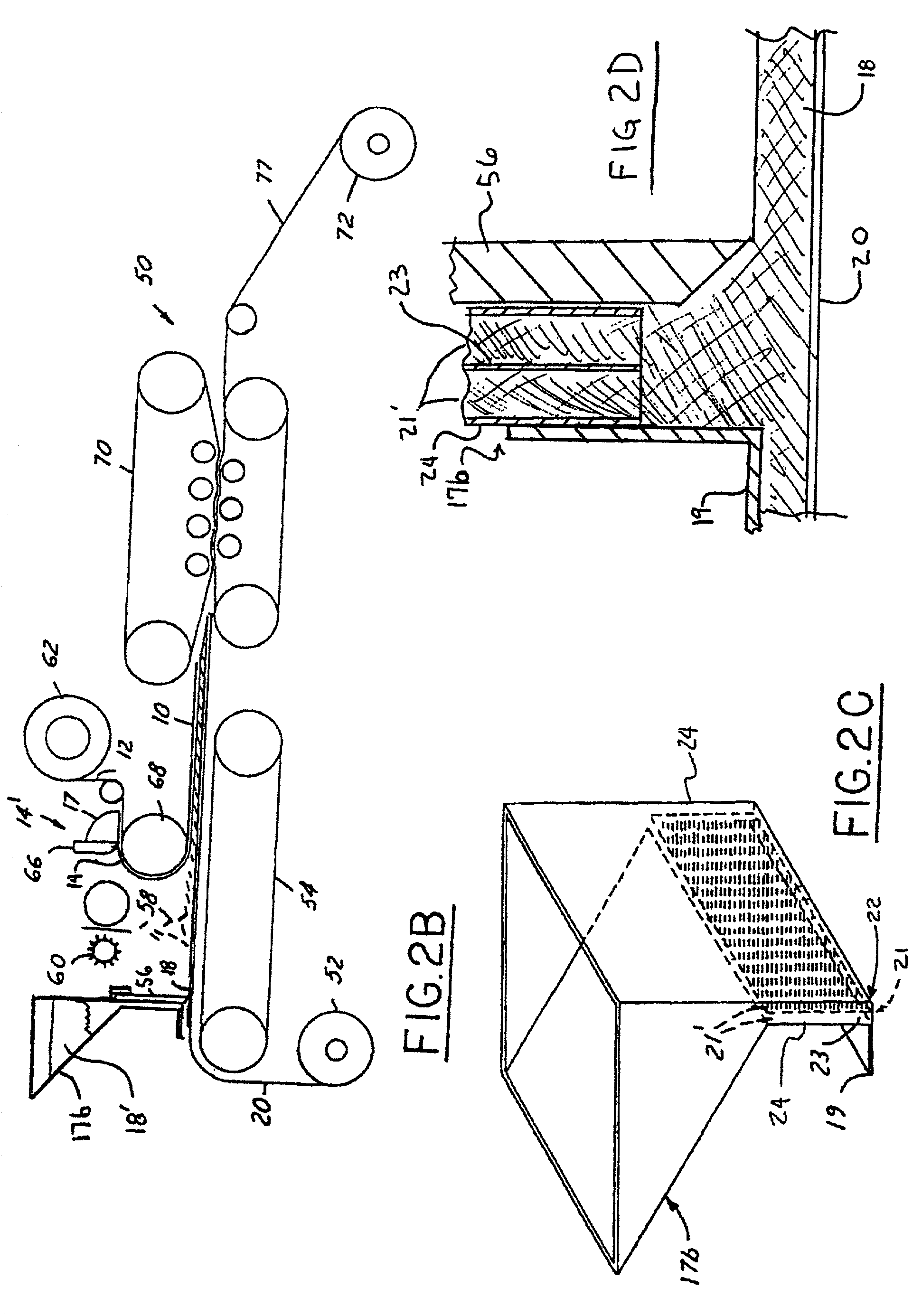Sheet molding compound having improved surface characteristics
a sheet molding compound and surface characteristics technology, applied in the field of reinforced fiber composites, can solve the problems of surface imperfections such as surface pores, fiber used in some sheet molding compounds typically does not flow well, and the charge typically does not form a class a type surface part, so as to improve the physical and surface characteristics and electrostatic sprayability
- Summary
- Abstract
- Description
- Claims
- Application Information
AI Technical Summary
Benefits of technology
Problems solved by technology
Method used
Image
Examples
Embodiment Construction
[0028]Referring now to FIG. 1A, a sheet molding compound made in accordance with a preferred embodiment of the present invention is generally shown as 10 prior to compaction. The sheet molding composite (SMC) sheet 10, from top to bottom, is shown having an upper carrier film layer 12, a top resin paste layer 14, a resin impregnated unfilamentized or partially filamentized fiber layer 16, a resin impregnated filamentized fiber layer 18 (including paste 18′ and filamentized fibers 57) and a bottom carrier film layer 20. Of course, the order of the layering from top to bottom for a finished composite part made from this sheet molding compound is reversed, as the resin impregnated filamentized fiber layer 18 forms the class A surface side desired when the SMC sheet 10 is made into a finished part. The process for forming the SMC sheet 10 of FIG. 1A is shown below in FIGS. 2A and 2B. Additionally, the cross-section of FIG. 1B may be made using this device, provided the paste 18′ does no...
PUM
| Property | Measurement | Unit |
|---|---|---|
| viscosity | aaaaa | aaaaa |
| viscosity | aaaaa | aaaaa |
| surface characteristics | aaaaa | aaaaa |
Abstract
Description
Claims
Application Information
 Login to View More
Login to View More - R&D
- Intellectual Property
- Life Sciences
- Materials
- Tech Scout
- Unparalleled Data Quality
- Higher Quality Content
- 60% Fewer Hallucinations
Browse by: Latest US Patents, China's latest patents, Technical Efficacy Thesaurus, Application Domain, Technology Topic, Popular Technical Reports.
© 2025 PatSnap. All rights reserved.Legal|Privacy policy|Modern Slavery Act Transparency Statement|Sitemap|About US| Contact US: help@patsnap.com



